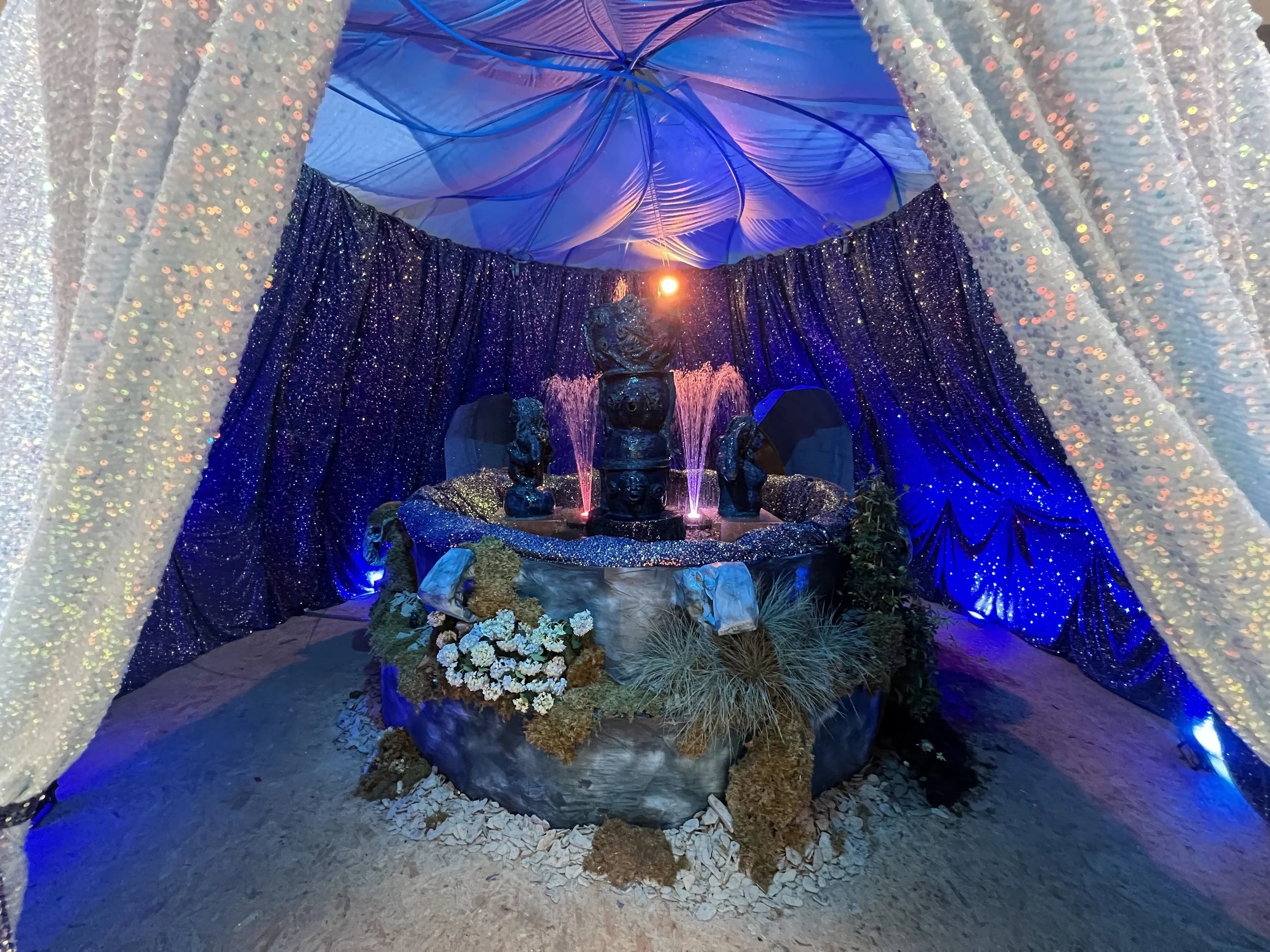'Fir Gorma' at Glasgow International
Merging a feat of construction with a childlike dream, there is something fantastical and nostalgic in the representation of ‘fir gorma’ by Josie KO and Kialy Tihngang, sharing likeness with a child’s imagination. A huge, blue, towering figure’s dress drapes from the ceiling, reminiscent of the safe and seemingly vast folds of a mother’s skirt from a childs perspective. Fir gorma takes an overlooked figure in Scottish history and remodels it through prodigious yet sensitive means, to create a new narrative to the mysterious ‘fir gorma’ or ‘Blue Man’.
‘Fir gorma’ references the mythological: ‘Blue men of the Minch’; infamous sea dwellers of the stretch of water between mainland Scotland and the outer Hebrides. With the power to create storms, taunt sailors, and sleep beneath the waves, they were commonly thought to just be a personification of the sea. However, an alternative reading of the mythical tale is to represent North African slaves brought to Scotland by the vikings, specifically to the Shiant islands in the outer Hebrides. Having experienced questions of their existence in Scotland as Black English women, the artists demonstrate and challenge feelings of identity ambiguity, through the reverence of their very own blue man. Uncanny and androgynous, the figure is an ambiguous and all encompassing embodiment of both the liminal figure of the sea, and the comforting figure that represents a deep lineage with Scotland.
Invited into the skirts of the figure, the audience encounters a bejewelled fountain that gives answer to the sounds of water penetrating the whole building. Here we are reminded of the focal point of the piece, and water is heralded perhaps as a symbol of identity, a recurring symbol. There is an element of the fountain structure that I initially perceived to be tacky, but drawing upon the aforementioned kid like essence, I would pass the excessive glitter off as the translated extravagance of a child’s mind. Invited deeper through cavernous tunnels, the audience reaches an equally dreamlike video piece, vaguely trippy and bizarre, telling the story of North African slaves being brought to Scotland. I feel this gives context to the rest of the piece in a playful means, and ties the piece together nicely.
Perhaps my reading of the kidlike communication of the work is subjective, but it in no way means to diminish the vulnerability and gravitas of the piece. In the way that children find creative ways to make succinct points, this exhibition does the same.





